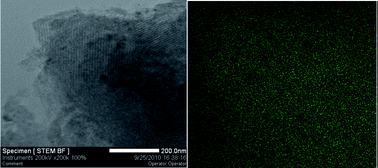Post-enrichment of nitrogen in soft-templated ordered mesoporous carbon materials for highly efficient phenol removal and CO2 capture†
Abstract
Control of porosity and structure and modification of surface and framework are the golden rules to adapt carbon materials to targeted applications. The former has been fairly well developed for the soft-templated FDU-type mesoporous carbons while there is still a large need for the latter. In this paper, a simple post-synthetic route is adopted to incorporate nitrogen-containing functionalities into the frameworks of these carbon materials. The basic principle relies on the confinement of melamine molecules in the mesochannels of an ordered mesoporous carbon matrix such that they self-condense into carbon nitride uniformly dispersed under a heat treatment at ∼500 °C and subsequently lead to the formation of mesoporous nitrogen-enriched carbon materials at 700–900 °C with well-retained ordered mesostructure and high surface area. The structure, porosity, composition and the nitrogen-containing functionalities are extensively studied. The integration of regular and open mesostructure, uniform and large mesopore size, high mesoporosity, and nitrogen enrichment makes these materials highly efficient for phenol removal, not only through physisorption with fast adsorption kinetics and large capacity but also by a newly found photo-degradation property with remarkable catalytic activity. Furthermore, the mesoporous nitrogen-enriched carbons deliver promising properties for CO2 capture with greatly enhanced heats of adsorption and well-retained high capacity. Given that the FDU-type mesoporous carbon materials hold variable structures, tunable pore sizes, flexible morphologies and an ease for large-scale synthesis, the success in nitrogen-enrichment would significantly accelerate the progress of their practical applications in pollution control, environment management, supercapacitors and fuel cells.


 Please wait while we load your content...
Please wait while we load your content...